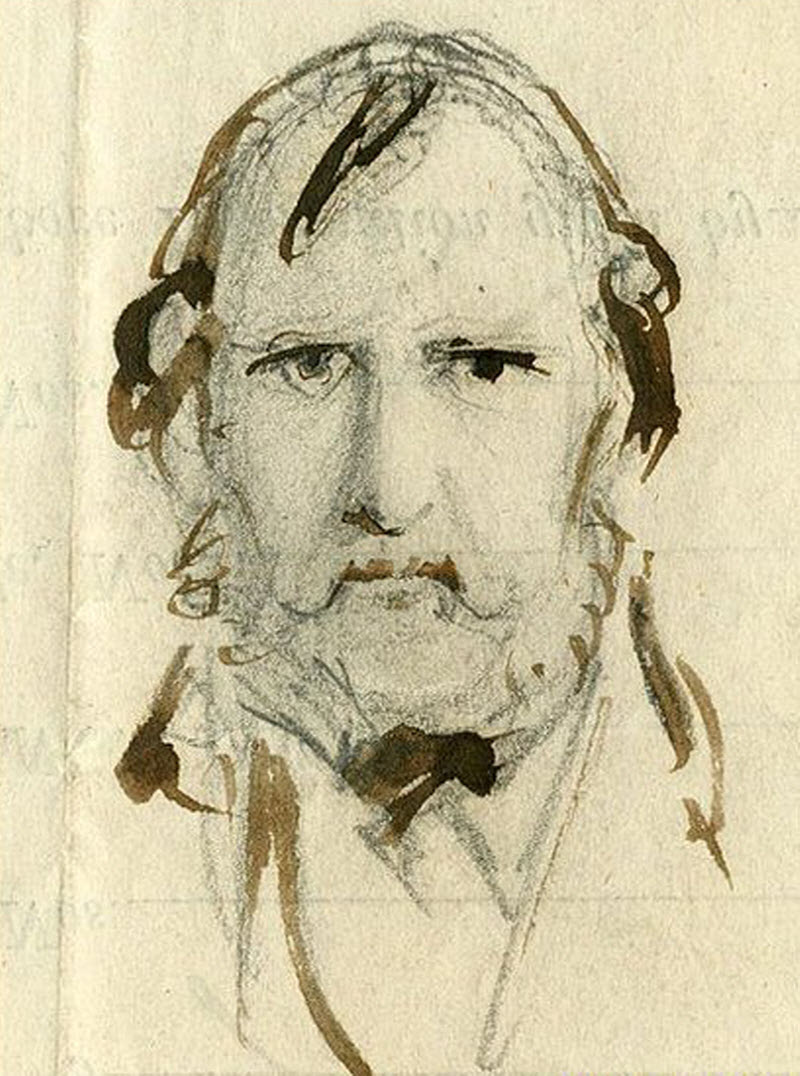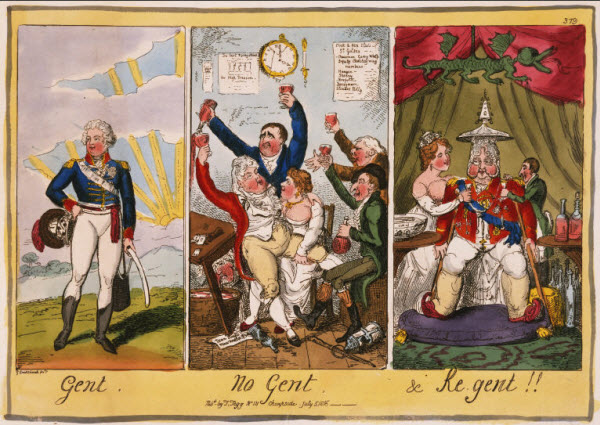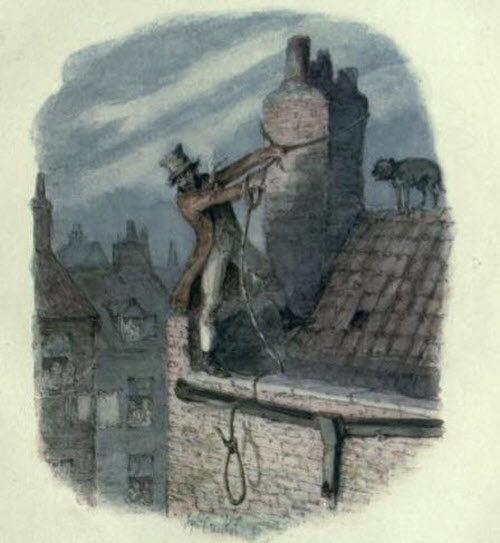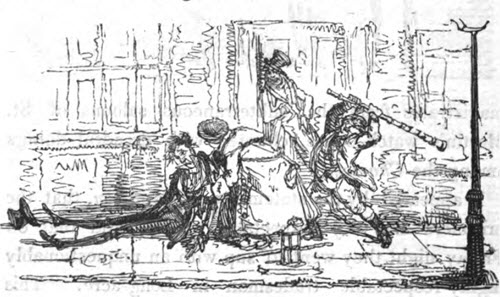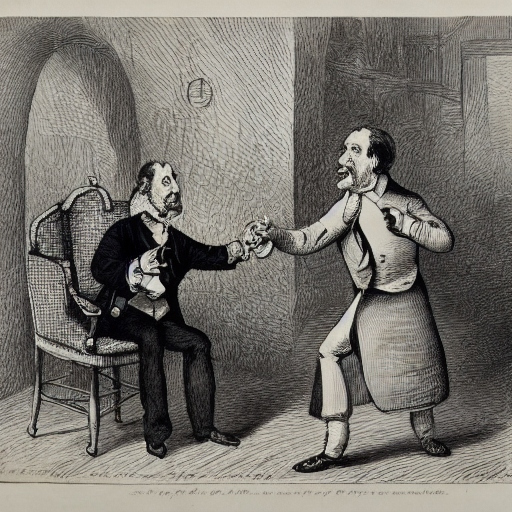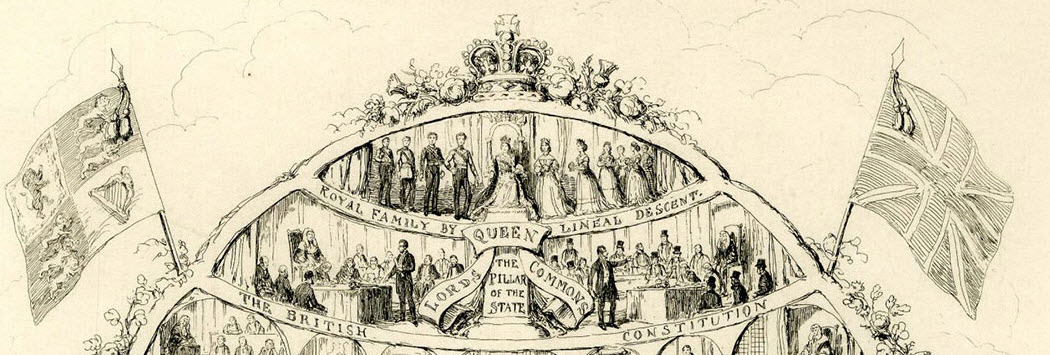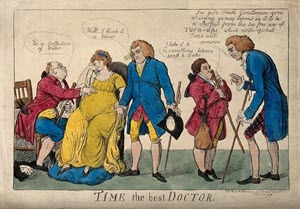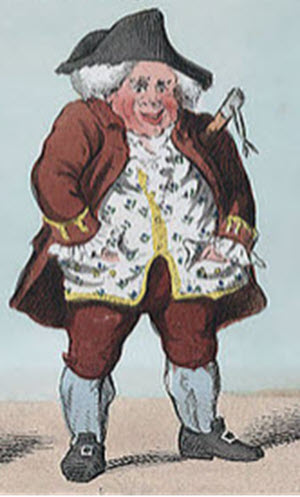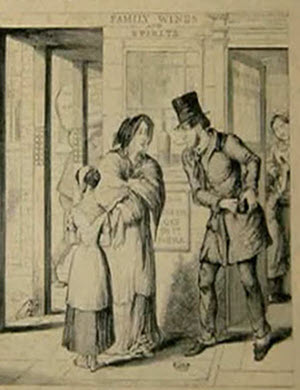Uncover the dramatic literary feud between George Cruikshank and Charles Dickens. Our article delves into the controversy that divided these iconic Victorian figures. Discover the behind-the-scenes drama that played out between the famous author and his equally famous illustrator. With exclusive insights and captivating storytelling, our website is the ultimate resource for anyone interested in the world of George Cruikshank. Explore this fascinating story today!
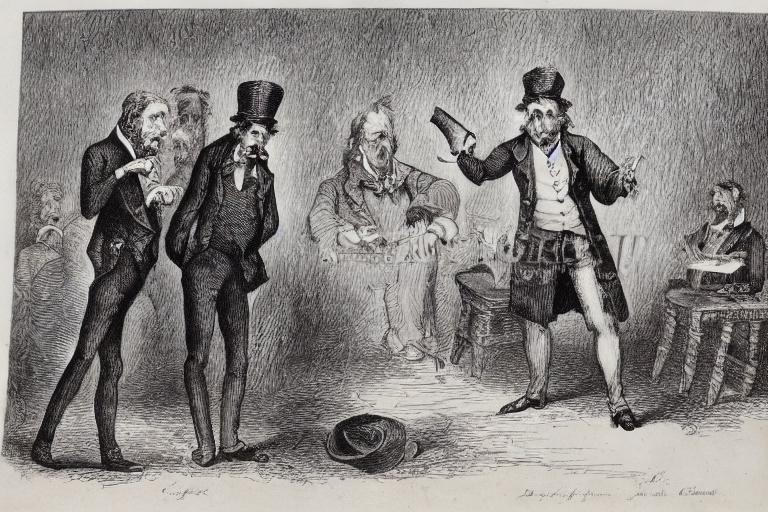
The feud between George Cruikshank and Charles Dickens is an interesting and complex story that sheds light on the creative process and the relationship between authors and artists. The feud began in the mid-19th century when Cruikshank accused Dickens of stealing his ideas for the books “Oliver Twist” and “A Christmas Carol.” This accusation led to a bitter and long-lasting dispute between the two men, which only ended with Cruikshank's death in 1878.
George Cruikshank was a well-known illustrator and caricaturist in Victorian England. He had a long and successful career, creating illustrations for many popular books, including those of Charles Dickens. However, in 1848, he began to claim that Dickens had stolen the idea for “Oliver Twist” from his own book, “The Life and Adventures of Jack Sheppard.” He also claimed that Dickens had copied elements of “A Christmas Carol” from his own book, “The Story of the Goblins Who Stole a Sexton.”
Cruikshank's accusations were not taken lightly by Dickens. In fact, he was outraged by the allegations and responded with a public letter that was published in the “Daily News.” In the letter, Dickens vehemently denied the accusations and pointed out that “Oliver Twist” was based on a true story and that he had never even read “The Life and Adventures of Jack Sheppard.” He also argued that the characters and plot of “A Christmas Carol” were entirely his own creation and that he had never heard of “The Story of the Goblins Who Stole a Sexton.”
The feud between Cruikshank and Dickens continued for several years, with both men trading insults and accusations in public. Dickens, who was a well-respected author at the time, had much to lose if the accusations were proven true, and so he fought back fiercely. However, the accusations began to take their toll on Dickens, and he eventually became disillusioned with Cruikshank and their friendship dissolved.
In the end, it is difficult to say who was right in the dispute between George Cruikshank and Charles Dickens. It is possible that there was some truth to Cruikshank's claims, as it is not uncommon for authors and artists to borrow ideas and themes from each other. However, it is also possible that Dickens was telling the truth when he denied the accusations and that the feud was simply the result of a misunderstanding or a clash of egos.
Certainly there are some similarities between the disputed works of Dickens and Cruikshank.
“The Life and Adventures of Jack Sheppard” is a novel written by George Cruikshank and William Harrison Ainsworth, which was first published in 1839. The novel tells the story of a young man named Jack Sheppard who becomes a notorious thief and jailbreaker in 18th century England. The book was a huge success, selling over 10,000 copies in its first year.
On the other hand, “Oliver Twist” is a novel written by Charles Dickens and was first published in 1837, two years before “The Life and Adventures of Jack Sheppard.” The novel follows the story of a young orphan boy named Oliver who is mistreated and abused by those who are supposed to care for him. He eventually falls in with a gang of criminals and becomes embroiled in their schemes.
While the two novels have many differences, there are several similarities between “Jack Sheppard” and “Oliver Twist.” One of the most striking similarities is the focus on the criminal underworld in London during the 18th and 19th centuries, which was not a common theme for popular novels at the time. Both novels offer a glimpse into the seedy underbelly of London, with detailed descriptions of thieves, pickpockets, and other unsavory characters. A gang of pick pockets features prominently in the story of Oliver Twist and pick pockets are present also in Jack Sheppard.
Another similarity between the two novels is the emphasis on the character of the criminal protagonist. In both cases, the authors provide a sympathetic portrayal of a young man who has turned to a life of crime due to circumstances beyond his control. Both Jack Sheppard and Oliver Twist are portrayed as victims of a harsh and unforgiving society, and their criminal behavior is seen as a response to this oppression.
Additionally, both novels feature elements of adventure and suspense, as the protagonists navigate their way through a dangerous world full of hidden dangers and unexpected twists. The novels also share a similar tone, with a mix of humor, tragedy, and social commentary that reflects the complex and often contradictory nature of life in Victorian England. Both works offer a critique of the social and economic conditions of Victorian England, and both are notable for their vivid depictions of the criminal underworld of London.
“The Story of the Goblins Who Stole a Sexton” is a short story written and illustrated by George Cruikshank in 1836, while “A Christmas Carol” is a novella written by Charles Dickens in 1843. Both works have become holiday classics and are often read and performed during the Christmas season. Although Dickens and Cruikshank had a bitter feud, there are some striking similarities between “A Christmas Carol” and “The Story of the Goblins Who Stole a Sexton.”

One of the most significant similarities between the two works is their focus on the theme of redemption. In both stories, the protagonist is a mean and miserly character who is visited by supernatural beings who show them the error of their ways. In “The Story of the Goblins Who Stole a Sexton,” the protagonist is a sexton named Gabriel Grub who is visited by goblins on Christmas Eve. The goblins show him visions of his past and future, which ultimately lead to his redemption. Similarly, in “A Christmas Carol,” the protagonist is Ebenezer Scrooge, a wealthy and miserly businessman who is visited by the ghost of his former business partner and three spirits who show him the error of his ways. Scrooge ultimately redeems himself by becoming a more compassionate and generous person.
Another similarity between the two works is their use of supernatural elements. Both stories include visits from supernatural beings that have a profound impact on the protagonist. In “The Story of the Goblins Who Stole a Sexton,” the goblins have a mischievous and frightening appearance, which contrasts with the warm and festive atmosphere of Christmas. In “A Christmas Carol,” the ghosts are similarly spooky and have a powerful effect on Scrooge, leading him to reconsider his life choices.
Additionally, both works offer a critique of the economic and social conditions of Victorian England. In “The Story of the Goblins Who Stole a Sexton,” Gabriel Grub is a poor and miserable character who has no one to care for him. The story highlights the plight of the poor during the Christmas season, a time when the wealthy celebrate and the poor are left to suffer. Similarly, in “A Christmas Carol,” Scrooge is a wealthy businessman who cares only about profit and has no concern for the welfare of his employees or the poor. The novella highlights the need for greater social responsibility and compassion in society.
In conclusion, despite the bitter feud between Dickens and Cruikshank, there are significant similarities between “The Story of the Goblins Who Stole a Sexton” and “A Christmas Carol.” Both works offer a powerful message of redemption, use supernatural elements, and offer a critique of the social and economic conditions of Victorian England. These similarities highlight the shared concerns and interests of the two authors, despite their personal differences.
However “The Story of the Goblins Who Stole a Sexton” is now almost entirely forgotten, relegated to a passing mention in a discussion of a feud between two giants of Victorian era publishing. Whether or not Dickens borrowed any of Cruikshank's ideas it is clear that Dickens made the stories his own, and it is his version - regardless of the source - which have stood the test of time.
